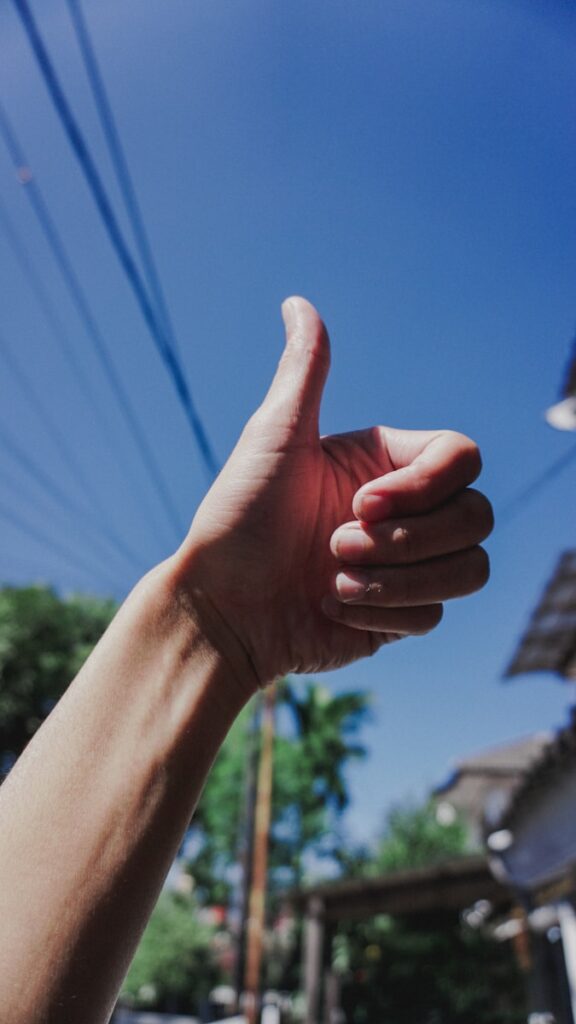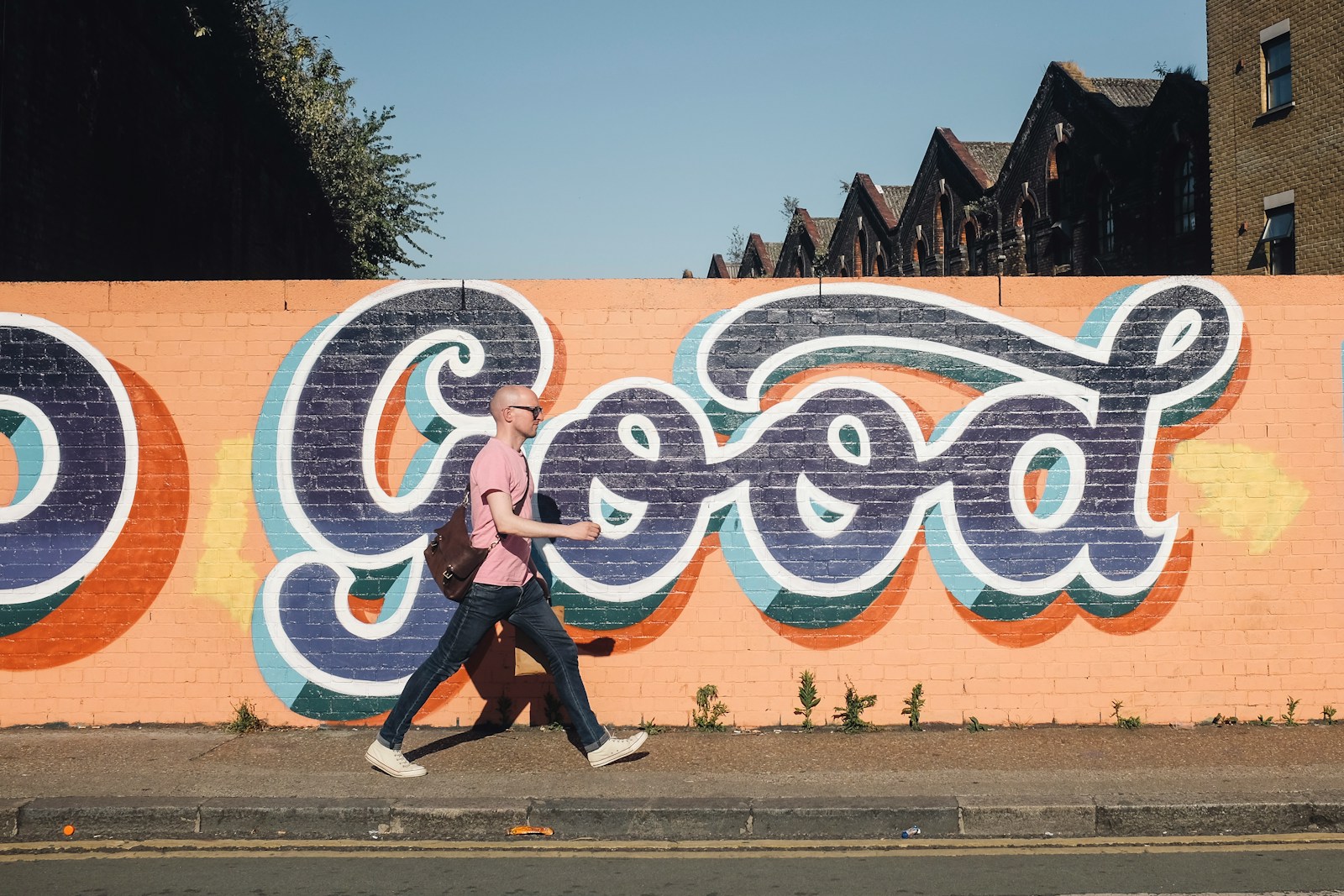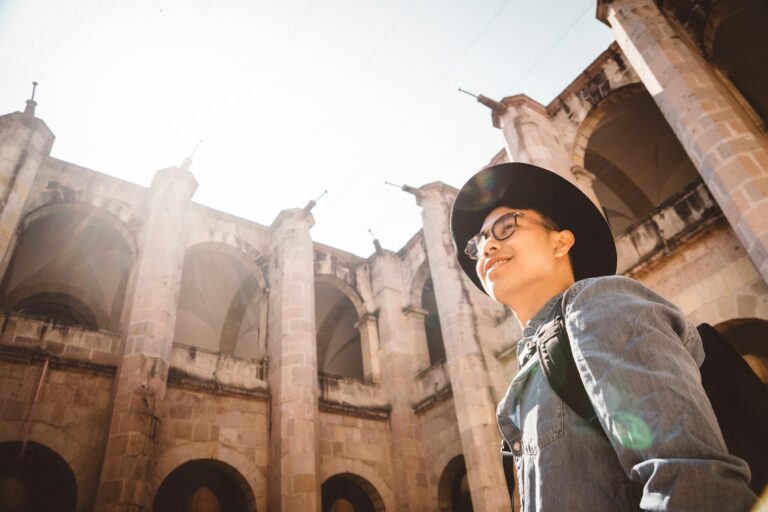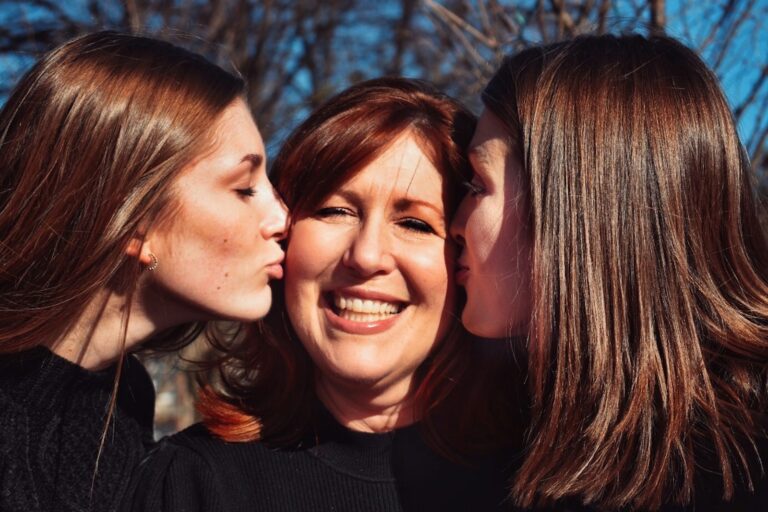How to Say ‘It Looks Good’ in Spanish: Phrases & Tips
Imagine you’re strolling through a vibrant market in Spain, surrounded by colorful tapestries, fragrant spices, and lively chatter. You spot a beautifully handcrafted vase that catches your eye. You want to compliment the artisan, but suddenly, you’re at a loss for words. How do you say “it looks good” in Spanish?
We’ve all been there—struggling to find the right phrase in a foreign language. Saying “se ve bien” or “luce bien” can make all the difference in connecting with locals and showing appreciation for their craftsmanship. But there’s more to it than just translating words; it’s about capturing the essence of the compliment.
Essential Spanish Phrases for “It Looks Good”

Finding the right phrase in Spanish can help you connect with locals and show your appreciation. Let’s jump into the essentials.
“Se Ve Bien”: The Most Common Translation
The phrase “Se ve bien” is your go-to for saying “it looks good” in Spanish. It’s simple yet effective, instantly making your compliment understood.
Breaking Down the Phrase
To use “Se ve bien” confidently, understanding its components helps.
Each part plays a unique role in conveying that something looks good.
Pronunciation Tips
Good pronunciation strengthens your compliment.
Component | Pronunciation |
|---|---|
Se | “seh” |
Ve | “beh” |
Bien | “byehn” |
Focus on getting these sounds right, and you’ll impress native speakers.
When and How to Use “Se Ve Bien”
Use “Se ve bien” in everyday situations. Whether you’re admiring a meal, a piece of clothing, or a new gadget, this phrase fits:
It’s versatile and easy to apply in many contexts.
Regional Variations Across Spanish-speaking Countries
Different regions add a splash of linguistic color:
Learning these regional variations can boost your language skills and help connect on a deeper level with locals.
Expanding Your Vocabulary: Alternative Ways to Say “It Looks Good”
When learning a new language, expanding your vocabulary adds depth to your interactions. Let’s jump into some alternative ways to say “it looks good” in Spanish.
“Está bonito/a” (It’s Pretty)
Use “Está bonito/a” when you want to describe something attractive or appealing. Picture strolling through a quaint city and spotting a lovely park. You’d say, “Este parque está bonito” (This park is pretty). This phrase fits perfectly when complimenting objects or places, adding a touch of genuine appreciation to your remarks.
“Qué guapo/a” (How Handsome/Beautiful)
If you admire someone’s or something’s appearance, “Qué guapo/a” is your go-to phrase. Imagine meeting a friend’s new pet and being amazed by its charm. You’d exclaim, “Qué guapo es este perro” (This dog is handsome). This phrase works wonders in social settings, making your compliments stand out and feel personal.
“Tiene buena pinta” (It Looks Promising)
When something appears promising or has a good appearance, “Tiene buena pinta” is the ideal phrase. Suppose you’re checking out a new restaurant and feel excited about the menu. You’d comment, “Este restaurante tiene buena pinta” (This restaurant looks promising). This phrase conveys your anticipation and positive impression effectively.
Context-Specific Phrases and Their Usage
Depending on the context, different phrases in Spanish capture the essence of “it looks good.” Here’s a handy table to guide you through various scenarios:
Phrase | Context Example | Usage Scenario |
|---|---|---|
Está bonito/a | Este parque está bonito (This park is pretty) | Complimenting objects or places |
Qué guapo/a | Qué guapo es este perro (This dog is handsome) | Admiring someone’s or something’s appearance |
Tiene buena pinta | Este restaurante tiene buena pinta (This restaurant looks promising) | Indicating promising or good appearance |
Mastering the Grammar Behind “It Looks Good” in Spanish

Ever tried to compliment something in Spanish but felt uncertain about the grammar? Let’s jump into how you can confidently say “it looks good” in Spanish using “se ve bien”. This phrase not only sounds great but also makes your compliments more impactful.
Understanding Reflexive Verbs Like “Verse”
Reflexive verbs might sound intimidating, but they’re straightforward once you break them down. A reflexive verb in Spanish indicates the subject is performing an action on itself. For instance, “verse” means “to see oneself.”
- Identify Reflexive Pronouns: Choose the pronoun matching the subject (me, te, se, nos, os, se). For example, with “se ve bien”, “se” is for he/she/it.
- Remove the -se Ending: Drop the “-se” from the infinitive form. “Verse” becomes “ver”.
- Conjugate Correctly: Match the verb to the subject. In “se ve bien”, “ve” is the correct form of “ver” for he/she/it.
Reflexive verbs might seem tricky, but with practice, they become second nature.
Adjective Agreement: Matching Gender and Number
Adjective agreement is crucial in Spanish. An adjective must match the gender and number of the noun it describes.
Proper agreement makes your Spanish sound polished and natural.
Common Grammar Mistakes to Avoid
Even advanced learners make grammar mistakes. Here are some common pitfalls to dodge:
Incorrect Verb Conjugations
It’s easy to slip up with verb conjugations. For example, instead of “se ve bien”, beginners might say “se ven bien” for a singular object, which is incorrect.
Incorrect | Correct |
|---|---|
La carne se ven bien | La carne se ve bien |
Misusing Gender Agreements
Using the wrong gender form of an adjective can change the meaning or make the sentence sound off.
Incorrect | Correct |
|---|---|
El casa es bonita | La casa es bonita |
La coche es bonito | El coche es bonito |
Cultural Nuances: Complimenting in Spanish-Speaking Countries
Understanding the nuances of complimenting in Spanish-speaking countries can significantly impact how your words are received. It’s not just about what you say but how, when, and where you say it.
The Importance of Context in Giving Compliments
Context is key when giving compliments. In Spanish-speaking countries, compliments can vary greatly based on the situation and the relationships involved. Complimenting someone’s appearance in a business meeting may come off as unprofessional, while the same compliment at a social gathering might be warmly welcomed. For instance, saying “¡Qué bien te ves!“ (You look great!) at a friend’s party will likely elicit smiles, but using it in a formal office setting might raise eyebrows.
Appropriate Situations for Using “It Looks Good” Phrases
When visiting a friend’s house for the first time, it’s customary to compliment their home. Remarks like “¡Qué bonita casa!“ (What a beautiful house!) or “Tu decoración se ve muy bien“ (Your décor looks great) show appreciation and respect. Avoiding such compliments can seem ungracious. Similarly, when a friend shows you something new, like a piece of jewelry or an artwork, phrases like “¡Se ve genial!” (It looks fantastic!) or “¡Qué bonito!“ (How pretty!) are appropriate.
Cultural Differences in Compliment Etiquette
Compliment etiquette can vary widely across Spanish-speaking regions, and it’s essential to navigate these cultural waters carefully.
Spain vs. Latin America
Compliments in Spain tend to be more direct and less frequent. You might say “Este vino está delicioso” (This wine is delicious) explicitly, but not overdo it. On the other hand, in many Latin American countries, compliments are often more fluid and frequent. For example, in Mexico, it’s common to compliment others on their appearance, with phrases like “¡Qué guapo/a!” (How handsome/beautiful!). But, understanding local variations matters—what’s customary in Argentina might differ in Peru.
Formal vs. Informal Settings
Formal settings demand subtlety and formality in compliments. In a professional setting, saying “Su presentación estuvo excelente“ (Your presentation was excellent) acknowledges someone’s work without crossing professional boundaries. In contrast, informal settings allow for more relaxed and personal compliments. Telling a friend, “¡Tu vestido se ve increíble!” (Your dress looks amazing!) adds warmth and camaraderie to the interaction.
Setting | Situation | Appropriate Compliments (Spanish) | English Translation |
|---|---|---|---|
Friend’s House | First visit | ¡Qué bonita casa!, Tu decoración se ve muy bien | What a beautiful house!, Your decoration looks very nice |
Social Event | Complimenting appearance | ¡Qué guapo/a!, ¡Te ves muy bien! | How handsome/beautiful!, You look great |
Workplace | Professional achievement | Su informe fue muy detallado, Tu presentación estuvo excelente | Your report was very detailed, Your presentation was excellent |
Latin America | General interaction | ¡Qué bueno está esto!, ¡Qué hermoso lugar! | This is so good!, What a beautiful place |
Spain | Dining out | Este vino está delicioso, ¡Qué rico está esto! | This wine is delicious, This is so tasty |
Exploring compliments in Spanish-speaking countries involves understanding the context, being aware of cultural nuances, and carefully choosing your words. This approach enriches relationships and fosters deeper connections.
Practical Applications: Using “It Looks Good” in Everyday Situations
Learning how to say “it looks good” in Spanish can open doors to deeper connections and more meaningful compliments. Imagine the delight of a local artist or a friend when you express admiration in their language. Here’s how to master it.
Complimenting Someone’s Appearance
When you want to compliment someone’s look, use the phrase Se ve bien. Whether it’s a stylish outfit, a sophisticated hairstyle, or that perfect makeup, this phrase works wonders. Picture this: You see your friend in a stunning dress and effortlessly say, Se ve bien. You’ll see their face light up.
If you want to make it more personal, say Te veo bien, which directly means “you look good.” This can make the compliment feel even more special. For instance, when your colleague rocks a new haircut, you can say, Te veo bien. It’s a direct and straightforward way to make someone’s day.
Expressing Approval for Objects or Places
There are moments when you walk into a beautifully decorated room or admire a new gadget. To express this, use Se ve bien for objects.
Imagine entering a friend’s newly furnished living room; you can say, Se ve bien, to express your admiration for their taste.
For places, a slight twist in phrasing works better. Use Luce bien to convey that a restaurant or hotel looks appealing. For example, discovering a charming cafe and exclaiming, Luce bien, showcases your approval.
Using These Phrases in Social Media and Texting
In today’s world, most compliments happen online. Send a quick text or post a comment using Se ve bien to let someone know their latest selfie is fire. Alternatively, you can write Te veo bien on someone’s post to make it more personal.
If commenting on a place, such as in a travel blog or a friend’s vacation photo, use Luce bien to show your appreciation. It’s an authentic way to connect and share your thoughts.
Role-Play Exercises for Real-Life Practice
Practice makes perfect. Role-playing real-life scenarios can cement your understanding. Find a study partner or simply practice aloud. Here are a few exercises:
- Complimenting a Friend: Pretend your friend got a new outfit. Practice saying, Se ve bien, then try Te veo bien for a direct compliment.
- Admiring a Decorative Item: Imagine your neighbor has a new piece of art. Say, Se ve bien to show your approval.
- Approving a New Restaurant: Picture walking into a newly opened restaurant. Practice the phrase, Luce bien, to get used to its natural flow.
By immersing yourself in these practical applications, you’ll gain confidence and fluency in giving compliments in Spanish, enriching your interactions and experiences.
Beyond “It Looks Good”: Related Spanish Expressions

Exploring beyond the phrase “Se ve bien” opens up a world of colorful Spanish expressions. You can truly wow someone with your grasp of the language.
Expressing General Approval and Satisfaction
Feeling amazed at your friend’s new outfit? Tell them “¡Bien hecho!” It’s like saying “well done!” ensuring they know their effort didn’t go unnoticed. If something unexpected yet delightful occurs, you might exclaim “¡Ázcale!” It conveys pleasant surprise often used informally to cheer on spontaneous achievements.
Complimenting Specific Features or Qualities
To compliment someone’s handsomeness or prettiness, say “Qué guapo/a” with a smile. It’s sincere and direct, capturing admiration elegantly. Want to describe someone as beautiful? Use “Eres muy bonito/a” which translates to “you are very beautiful.” It feels personal and affectionate.
Responding to Compliments in Spanish
Responding gracefully to kind words is an art. If someone mentions “Qué guapo/a” about you, reply with “Gracias” (thank you) or elevate it with “Me haces sonrojar” (you’re making me blush) to show genuine gratitude. If you’re praised with “¡Bien hecho!”, responding with “Gracias, me hizo feliz escucharlo” (thank you, it made me happy to hear that) can make the exchange warmer and more memorable.
Spanish Phrase | English Translation | Usage Context |
|---|---|---|
Se ve bien | It looks good | General approval for objects/situations |
¡Bien hecho! | Well done! | Encouragement/approval for actions |
¡Ázcale! | Wow! | Surprise/approval in informal settings |
Qué guapo/a | How handsome/pretty | Compliment on appearance |
Eres muy bonito/a | You are very beautiful | Compliment on beauty |
Next time you’re in a Spanish-speaking environment, these phrases can help you connect better. They aren’t just words but bridges to understanding, warmth, and genuine human connection.
Conclusion: Mastering the Art of Saying “It Looks Good” in Spanish
Mastering how to say “it looks good” in Spanish can open doors to deeper connections and richer cultural experiences. Whether you’re complimenting a friend’s outfit or admiring a beautiful piece of art, these phrases will help you express your appreciation genuinely. Don’t hesitate to use them in everyday conversations, social media, or even while traveling. The more you practice, the more natural it will feel, and you’ll soon find yourself exploring Spanish-speaking environments with ease and confidence. So go ahead, sprinkle these compliments into your interactions and watch your connections flourish!
Frequently Asked Questions
What is the meaning of “Se ve bien” in Spanish?
“Se ve bien” translates to “it looks good” in English. It’s commonly used to compliment someone’s appearance, objects, or places, showing approval and positivity.
How can I use “Se ve bien” in everyday conversations?
You can use “Se ve bien” to compliment someone’s outfit, a meal, or even a newly decorated space. It’s versatile and can be used in various contexts to express approval.
What are other ways to say “it looks good” in Spanish?
Other phrases include:
“Está bonito/a” – It’s pretty.
“Luce bien” – It looks good.
“Qué guapo/a” – How handsome/beautiful.
How do I compliment someone’s appearance in Spanish?
To compliment someone’s appearance, you can say:
“Te veo bien” – You look good.
“Qué guapo/a” – How handsome/beautiful.
“Eres muy bonito/a” – You are very pretty.
Yes, phrases like “Se ve bien” and “Qué guapo/a” are perfect for social media and texting to compliment friends, family, or even favorite places and objects.
What are some colorful Spanish expressions for approval?
Some expressions include:
“¡Bien hecho!” – Well done!
“¡Ázcale!” – Wow! (pleasant surprise)
“Impresionante” – Impressive.
How should I respond to compliments in Spanish?
Graciously respond with phrases like:
“Gracias” – Thank you.
“Eres muy amable” – You are very kind.
“Lo aprecio mucho” – I appreciate it a lot.






